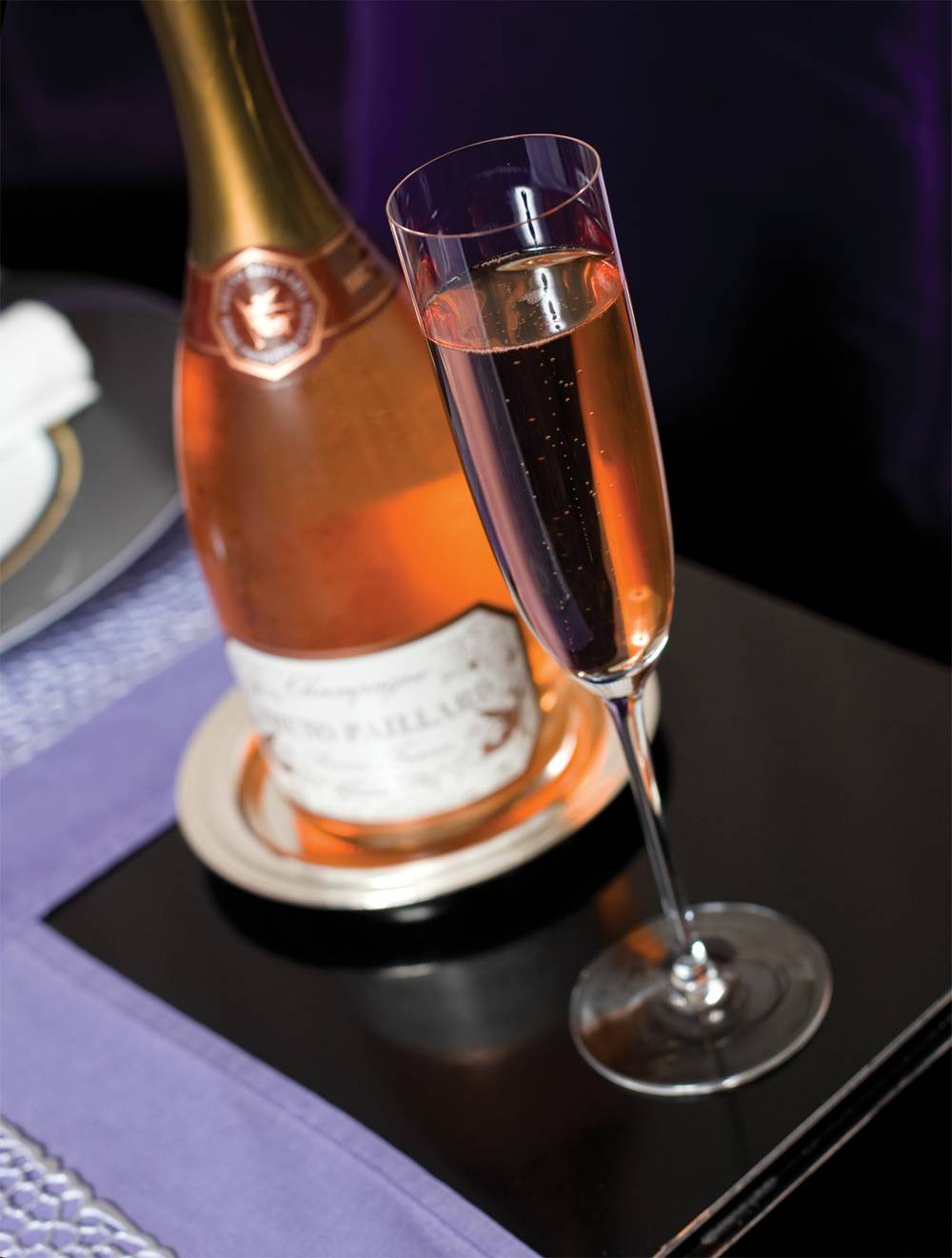Las Vegas loves to drink Champagne. Who knows how many sommeliers and bottle girls wake up on Monday mornings with bruised thumbs from all the cork popping? But during a recent weeklong visit in the Champagne region of France (I know, poor me), I learned there’s a lot more to the bubbly stuff than most of us realize. For example:
1. True “Champagne” comes only from the Champagne-Ardenne region of North East France. There are sparkling wines made all over the world, and some are very good, but they are not “Champagne.” Period.
2. All Champagnes are not alike. Not nearly. They are all made from three grapes (Chardonnay, Pinot Noir and Pinot Meunier), with some exceptions, but the variations from growing in different sub-climates of Champagne and differing methods of blending and maturing make every Champagne label unique.
3. All of Champagne is on top of a thick layer of chalk and limestone. That’s how Champagne, the Northernmost wine-producing region in Europe, is able to grow good grapes. Porous chalk gives the plants a consistent water supply. It also contributes a minerality that is one of the unique qualities of Champagne.
4. Many Champagne caves actually use Ancient Roman-era chalk mines, dug 40 meters into the ground, in pyramid shapes. Others still use original wine cellars built by the monks who made the first wines in Champagne as early as the 12th century. Within these caves you can see 16th century notations, 18th century carvings, and decades of graffiti.
5. Speaking of history, the region of Champagne-Ardennes is also a crossroads of history, where almost all of the French kings were crowned, and where decisive battles of the 100 Years War, World War I and World War II were fought.
6. You want bling? Champagne Drappier produces the world’s largest champagne bottles, the Mechiasedech, equal to 40 bottles. One costs somewhere around $7,000, and is available only by direct order. (They make about 25 a year.)
7. Champagne is not just for celebrations and romantic dates. You can pair different Champagnes with virtually any food, and serve it anytime during a meal from the aperitif to dessert (or by itself). Although the French seem amused that Americans drink it “for breakfast.” (They mean Sunday Bruch, of course.)
8. Champagne was originally very sweet wine, sipped only at dessert, until the 1850s, when either Perrier-Jouët or Pommery (depending on whom you ask), wanting to sell more to the British, agreed to make the wine less sweet to appeal to their tastes, and made the first “Brut” Champagne. To taste what Champagne used to be like, try Pommery’s Madame Pompadour or Doyard’s La Libertine.
9. Perrier-Jouët is pronounced with a hard T at the end. Yes, it is. Say it with me, “Zhew-ett.”
10. You might expect a Champagne winemaker (“Chef du Caves”) to be most proud of his or her expensive vintage bottlings. Actually, most are proudest of their standard non vintage (or “multi-vintage,” more accurately) Bruts, because blending a consistent style from year to year takes more skill and finesse than making a good wine from a great crop.
11. All Champagne houses are not built alike. Some are huge corporations making millions of bottles a year (most of the labels you know), while others are tiny houses that only bottle from their own small parcels of vines. It may be the most controlled appellation in the wine world, with a central committee dictating regulations on everything from pruning to classifying winemakers as grower-producers vs. collectives, etc.
12. Nobody—and I mean nobody—drinks Champagne out of flute glasses in Champagne. They all drink it from ‘tulip’ (like small white wine) glasses, which do a much better job of maintaining the ‘nose’ of the wine, as well as the bubbles. Try it, and you’ll notice the difference immediately.

Previous Discussion: